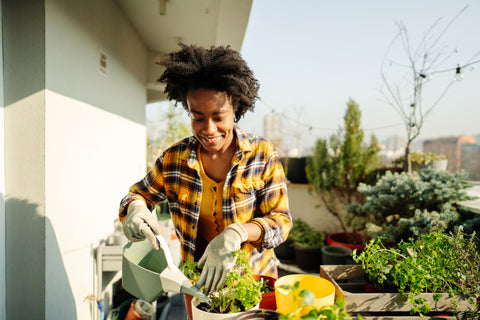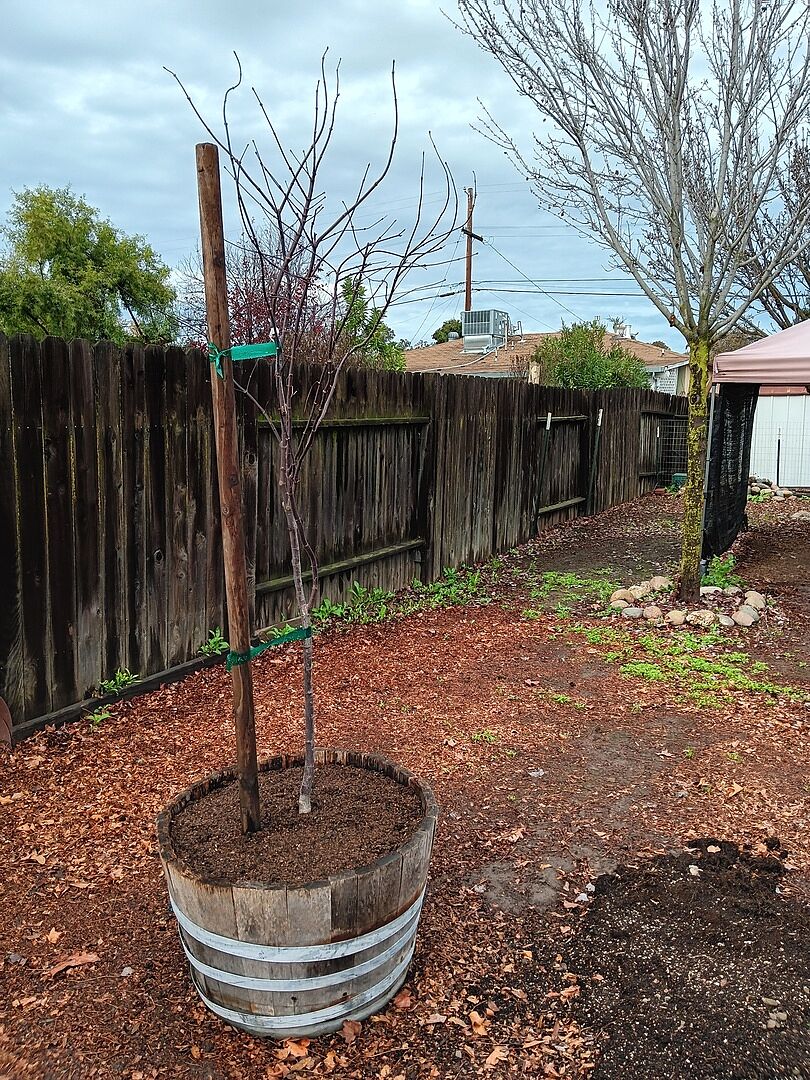How to Care for Your Plants in a Heat Wave

Last updated: Aug 09 2022

Hot summer temperatures can take a toll - on you and your plants! We know it’s never fun to see wilting leaves and drooping stems in your landscape, but there’s no need to panic - we promise. Just like us, most plants can bounce back from heat stress with just a little TLC, and you’ll be good to grow before you know it.
See below for our expert tips on treating and caring for your plants through a heatwave - and if you have questions, don't hesitate to reach out!
Water wisely
High temperatures dry soil out quickly, so it’s critical to keep your plants hydrated. Smart watering techniques can help minimize water loss and maximize hydration:
Early morning is best
Hot mid-day temperatures can cause water to evaporate before it even gets the chance to absorb in the soil - meaning you'll use more water and your plants will still be thirsty.
For best results, water in the early morning when temperatures are cooler, so less water will be lost to evaporation and more can be absorbed by your plant's roots.

Go low and slow
We've all been there - you accidentally spray your plants with the hose on the highest setting. getting water and soil everywhere and leaving your plants looking a little worse for the wear.
But the mess isn't the only issue you'll have to deal with - water pressure that's too high can displace the soil, as well as run off before it gets a chance to be absorbed by your plants. Water slowly, with low water pressure, and you'll displace less soil, allowing more hydration to soak in. If you can, water for several minutes with the hose at just above a trickle.
Investing in a drip irrigation system can also help with slow, consistent watering!
Pay extra attention to potted plants
More soil volume = better water retention. That means that plants in the ground, or in very large containers, will maintain their moisture levels better - but plants in smaller containers are likely to dry out faster, requiring more water. This is especially true in times of extreme heat or drought!
Plants in containers will dry out faster than plants in the ground. Be sure to keep an eye on your potted plants and give them extra water when needed!

Add some cover
Even the most sun-loving plants can show signs of stress in the heat of summer. Adding shade can help prevent sunburn (yes, plants can get sunburned, too!) and help the soil retain more moisture.
This can even apply to plants that grow best in full sun! As long as they get some mild morning sun, if they're showing signs of stress, you can move them into the shade in the heat of the day, and they'll be just fine.
Find a shady spot
On hot days, you can move container plants into a shaded area (like under a covered patio) for added protection from the harshest rays (typically, between 10 am and 4 pm).
To know when to do this, look out for signs of sun damage, like brittle leaves or browning and discoloration, particularly on the leaf tips. It often looks like the foliage has been scorched by a flame - exactly like you'd think sunburn on a plant would look!

Get creative with coverings
For more delicate plants in the ground (where moving them isn't an option), you can add shade using a patio umbrella, shade sail or even an unused bedsheet.
(As an added bonus - many of these coverings will allow some light to get through - giving your plants the benefit of sunlight while protecting them from damage).
Know what to look for...
How do you know when your plants are suffering from heat stress? Don't worry - they'll tell you! Here are a few common signs of heat stress to look out for:
- Rolled or cupped leaves: You may notice your plants' foliage rolling up - this minimizes surface area exposed to the sun, reducing moisture loss (plants are pretty smart!).
- Wilting: Wilting, droopy leaves are a tell-tale sign you need to add more water. This is usually temporary, and your plants will perk back up with some extra water or when the temperatures drop at night.
- Brown, dry edges: Sunburn and water loss can cause the edges of your plants' leaves to become brittle and brown - even when the rest of the leaf is healthy and functioning!

...and what to avoid
While you mostly want to care for your plants as normal during hot weather (with some added water and shade when needed), there are a few things you'll want to avoid, to reduce stress on your plants. This includes:
- Fertilizing: Fertilizing can encourage your plant to grow - and while that's normally great, you want to avoid introducing delicate new growth during times of extreme heat. Fertilizing can also cause your plant to dry out faster!
- Pruning: Anything that could cause a plant injury or stress, including pruning, should be avoided during times of extreme heat and drought.
- Planting or transplanting: The same goes for planting or transplanting plants - while you can plant healthy trees and plants in summer, you'll want to avoid doing it during heat waves, to give them a better chance to establish.
- Chemical application: Avoid chemical treatments like weed or insect killer during the hottest times of the year, since the chemicals can weaken plants and make them more susceptible to damage.
Listen to your plants
The most important tip we can share? Pay attention to your plant’s needs - they’ll tell you when they need some TLC. Check for soil moisture and other signs of heat stress, like wilting, drooping, or dry, brown leaves. With a little care, you and your plants can beat the heat.
We’re here to help!
If you’re dealing with heat- or drought-stressed plants, our plant experts are available 7 days a week to answer your questions. Chat with us, or give us a call at (800) 973-8959.
Check out these additional resources for summer plant care:

Written by
Abby Healy
Abby is an avid plant lover and the Director of Content at FastGrowingTrees.com. She grew up in Maine, graduated from Davidson College, and now resides in Charlotte, North Carolina with her husband and two dogs. Her previous roles include leading content teams at Red Ventures, a large digital media company, and launching the content and marketing functions at an ecommerce analytics start-up.
While her indoor plant collection is always growing, she also loves landscaping tips and learning more about plant care and maintenance. Her favorite plants are Japanese maples, roses of all kinds, and unique house plants.
Featured Product

Thuja Green Giant Arborvitae
3112 reviewsStarting at $44.95























































































































































































































































